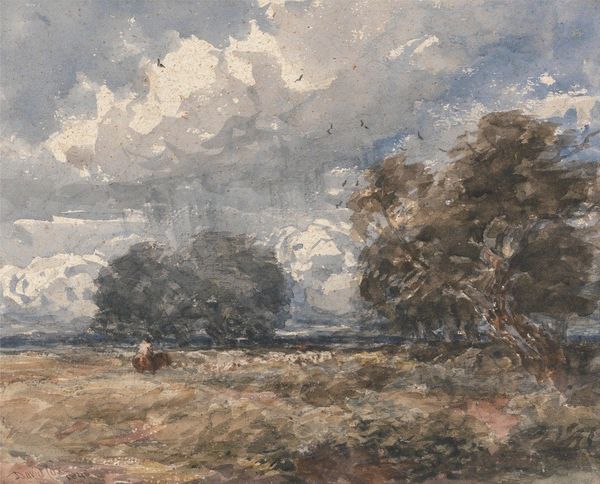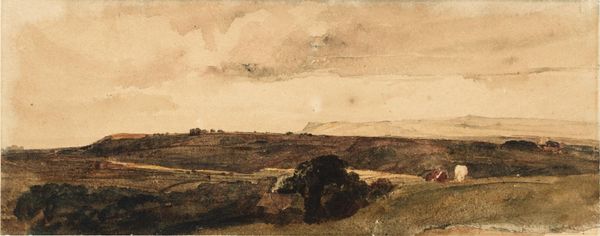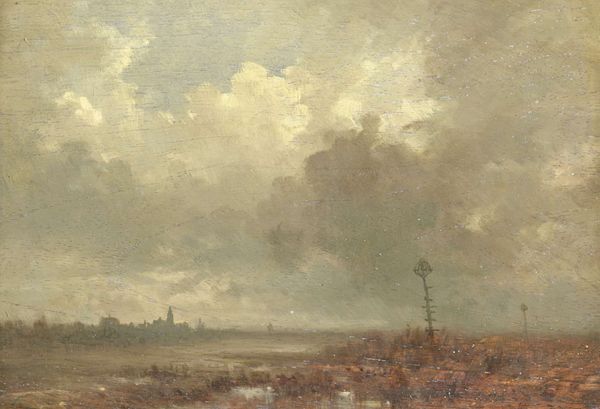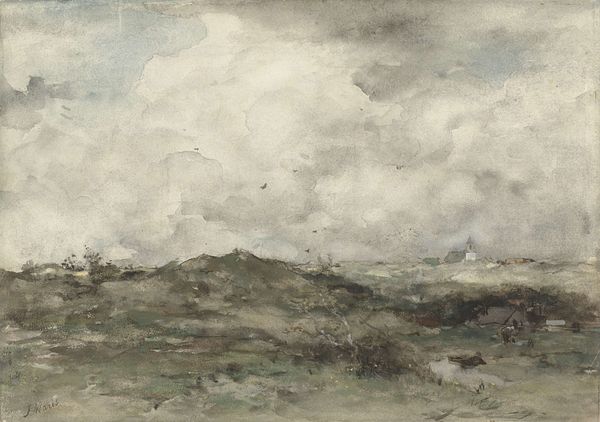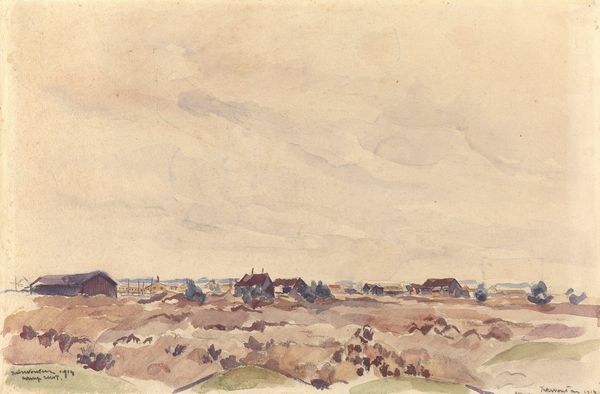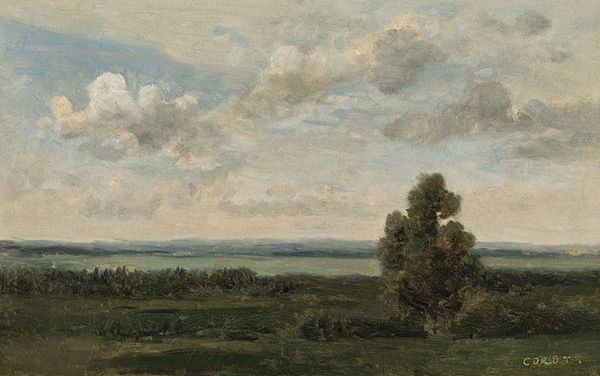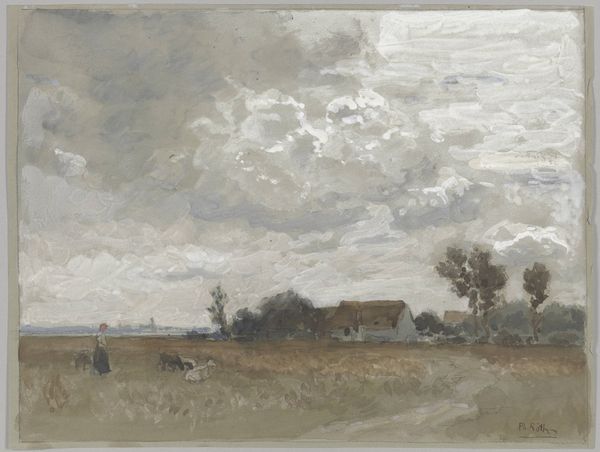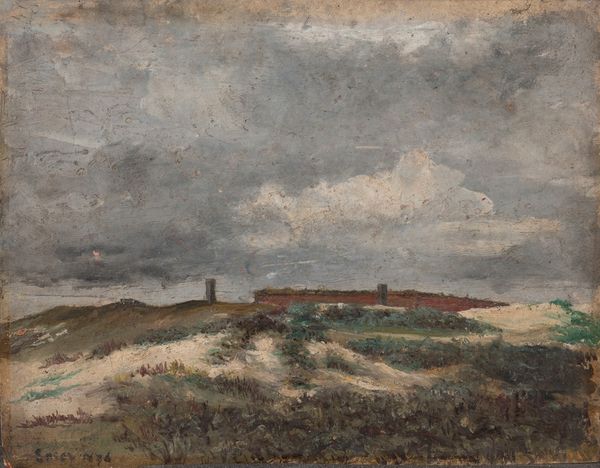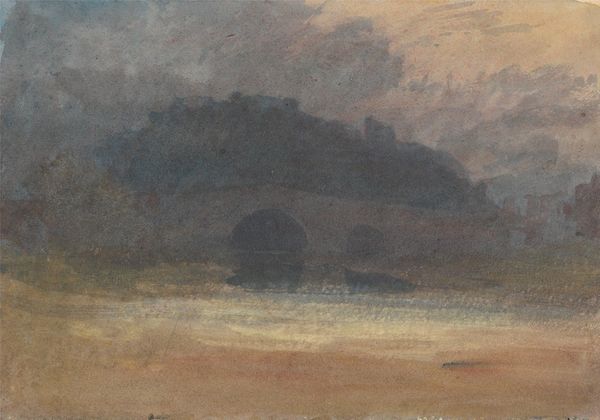
plein-air, watercolor
#
impressionism
#
plein-air
#
landscape
#
oil painting
#
watercolor
#
watercolor
Copyright: Public Domain: Artvee
Félix Ziem's watercolor, Barbizon, evokes the landscape tradition through a motif as old as art itself: the horizon. Here, the long horizontal line divides the earth from the sky. Think back to the ancient world, to the frescoes of Pompeii, where similar lines frame idyllic scenes. This division isn’t just pictorial; it’s psychological. The horizon symbolizes the known and the unknown, the present and the future. Our eyes are drawn to it, a silent invitation to contemplate what lies beyond. This line also represents an existential threshold, a point of balance between reality and aspiration. How often have artists used the horizon to express longing, the desire to transcend earthly bounds? Like Caspar David Friedrich before him, Ziem harnesses this symbol, engaging our collective memories and stirring a deep, subconscious yearning. The horizon is not a static boundary, but rather a dynamic, ever-shifting concept that reflects the cyclical nature of human experience.
Comments
No comments
Be the first to comment and join the conversation on the ultimate creative platform.
